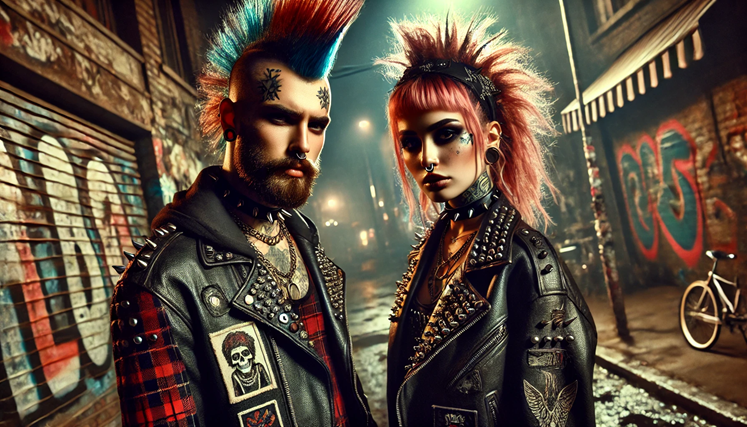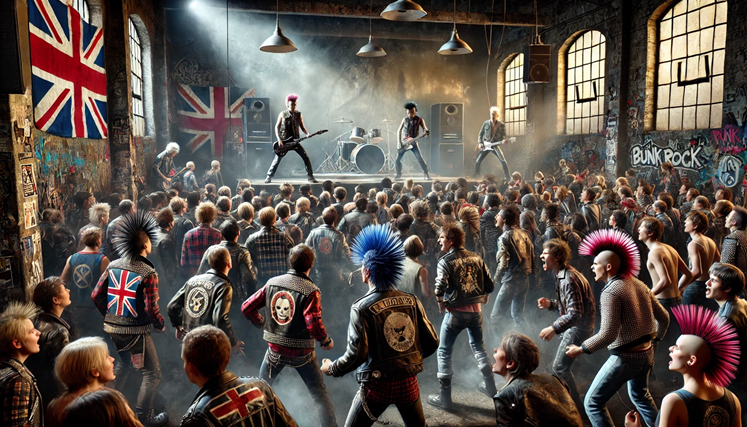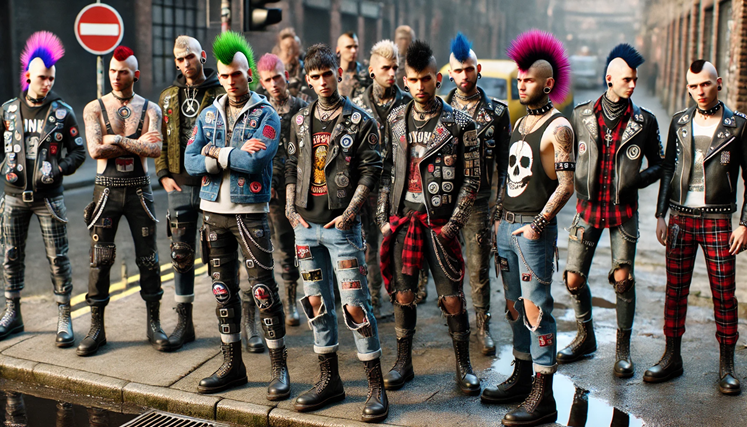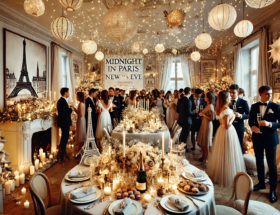Welcome to GertieBlu, where today we’re celebrating the grit, rebellion, and unfiltered energy of punk rock. Punk was more than just a music genre; it was a massive middle finger to society’s rules and a soundtrack for those who felt left out. From the raw sound to the iconic, in-your-face style, punk rock became an unstoppable movement. Why did it hit so hard? And does punk still pulse through today’s culture?
Let’s dig into what made punk rock a force to be reckoned with. We’ll look at the unapologetic music, the unmistakable fashion, and the bands that turned punk from a niche scene into a global phenomenon. Whether it’s the slam of guitars, the defiance of leather and studs, or the message of individuality, punk’s legacy is as alive as ever. So join us as we celebrate the attitude, the influence, and the enduring spirit of punk rock—because rebellion never goes out of style.
Why Punk Rock Broke Through
In the mid-1970s, punk rock hit the music world like a grenade. It wasn’t just loud guitars or fast tempos; it was a rallying cry for those who felt like they didn’t belong. Punk was stripped-down, raw, and proudly DIY. Forget about polished production or glamorous rock stars—punk was here to strip things back to the basics, and that was exactly what made it revolutionary.
Punk thrived because it challenged the status quo at every turn. In a time when mainstream rock was turning glossy, punk tore up the rulebook. It was a sound for the disaffected, for people who were tired of the establishment, and for anyone who wanted to shout, scream, and make their voice heard.
The Fashion: More Than Just Style
Punk fashion became a visual rejection of “normal.” Leather jackets adorned with pins, spikes, and patches, torn jeans, safety pins, and neon-colored mohawks weren’t just style choices—they were acts of defiance. Every ripped T-shirt, every pair of battered Doc Martens, and every clashing color was a statement against conformity.
Punk fashion didn’t come from the runway; it came from thrift stores, DIY culture, and a refusal to fit the mold. Punks customized their clothes, creating unique looks that couldn’t be bought in a store. Mohawks and wild hair colors? Not just a style—it was about grabbing attention, rejecting traditional beauty standards, and making a statement.
The Punk Rock Fashion Statement
Punk rock wasn’t just about the music; it was also a bold, visual rebellion. The fashion of punk mirrored the movement’s ethos: anti-establishment, DIY, and deliberately confrontational. Some of the most iconic punk fashion elements include:
- Leather Jackets: A staple, often customized with patches, pins, or painted slogans.
- Torn Clothes: Ripped jeans, T-shirts, and fishnet stockings became signatures of the punk look, symbolizing a disregard for societal norms around “appropriate” dress.
- Safety Pins and Chains: Used as jewelry, these items were part of the DIY aesthetic and an emblem of the “no rules” approach.
- Brightly Colored Hair and Mohawks: Punk hairstyles challenged conventional beauty standards, with many punks dyeing their hair neon colors or sporting mohawks.
- Doc Martens and Converse: Boots and sneakers became synonymous with the punk lifestyle, providing a durable option for the mosh pits and streets alike.
Punk fashion’s deliberate defiance influenced generations of alternative styles, from grunge in the ’90s to the streetwear aesthetic of today.

The Most Notable Punk Rock Bands
These bands weren’t just musicians; they were pioneers of a counterculture that shook things up. Here are ten of the bands that made punk an unstoppable force:
- The Ramones
Often hailed as the godfathers of punk, The Ramones took a simple, fast-paced approach to rock, with songs that were short, catchy, and delivered with breakneck energy. Their style helped define American punk. - The Sex Pistols
The Sex Pistols are one of the most controversial and iconic bands in punk history. Known for their raw, aggressive sound and anti-establishment lyrics, they took punk to the mainstream in the UK with tracks like “Anarchy in the U.K.” and “God Save the Queen.” - The Clash
Mixing punk with reggae, ska, and rockabilly, The Clash expanded punk’s boundaries and wrote politically charged anthems. Their album London Calling is a classic, bridging punk with broader musical influences. - Black Flag
Known for their intense, aggressive style and thought-provoking lyrics, Black Flag helped define hardcore punk in America. Their DIY ethos was an inspiration for countless bands. - The Dead Kennedys
With biting political lyrics and a fast, ferocious sound, Dead Kennedys brought a satirical, often shocking edge to punk, pushing boundaries in both music and message. - Bad Brains
Bad Brains were unique not just for their mix of punk and reggae but also for their position as an all-black punk band. Their speed, aggression, and Rastafarian messages set them apart in the punk scene. - Buzzcocks
Buzzcocks are known for adding a pop edge to punk, crafting songs about love, alienation, and angst with infectious hooks that have influenced alternative music for decades. - The Misfits
Known for their horror-inspired lyrics and imagery, The Misfits brought a macabre twist to punk rock. They helped pioneer the sub-genre of horror punk, blending punk with themes of B-movie horror and sci-fi. - Minor Threat
With a fast, no-frills approach, Minor Threat helped define the hardcore punk scene and spread the straight-edge movement, which advocated for a lifestyle free from drugs and alcohol. - Green Day
While Green Day came a bit later, they brought punk rock to mainstream audiences in the ’90s, sparking a punk revival. Albums like Dookie made them household names and reinvigorated punk for a new generation.
Does Punk Rock Still Exist?
While the golden age of punk rock may have passed, punk’s rebellious spirit is far from dead. The genre’s ethos of anti-establishment, DIY creativity, and unflinching individuality continues to pulse through music, fashion, and art today. Punk lives on in the underground and in other genres, from indie rock to hardcore and even hip-hop. Contemporary bands like Idles, Amyl and the Sniffers, and The Interrupters carry the torch, blending punk’s raw energy with modern themes that resonate in today’s world.
Punk scenes thrive in local shows, zines, and independent labels worldwide, with new generations of fans finding their place in this timeless movement. Festivals like Punk Rock Bowling in Las Vegas or Rebellion Fest in the UK bring together thousands of enthusiasts, showing that punk is still here and as energetic as ever.
In a world where mainstream culture often feels overproduced and sanitized, punk’s grit and authenticity offer a necessary antidote. It may not dominate the charts, but punk’s legacy ensures it will never truly fade.

Closing Thoughts
Punk rock is more than just music; it’s a way of life, a mindset, and a statement against conformity. From the aggression of The Sex Pistols to The Clash’s genre-bending sounds and Green Day’s punk revival, punk has proven its staying power. The sound, the look, and the attitude of punk continue to inspire and influence.
Whether you’re a lifelong fan or a newcomer, punk rock is a reminder that rebellion, authenticity, and self-expression will always have a place in our world.
Rock on, punks!
GertieBlu 🎸✨









